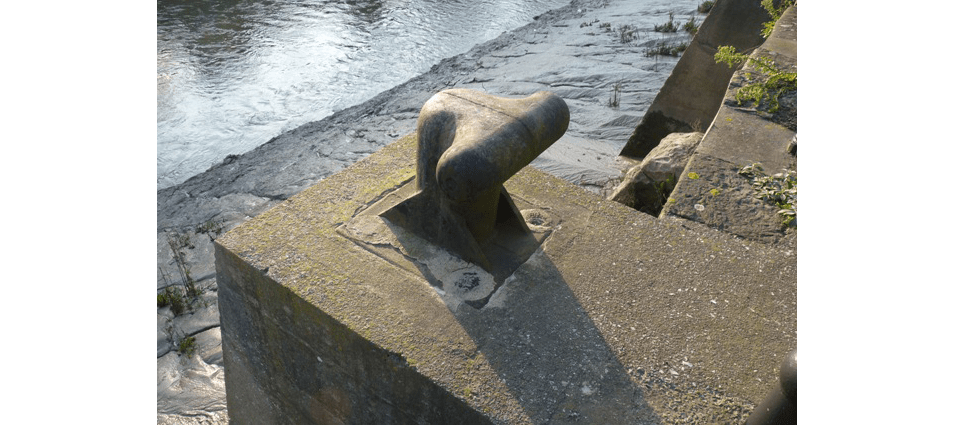Bristol was heavily bombed by the Germans during WWII. The large amounts of rubble resulting from the destroyed properties had to be cleared quickly but how? The answer was to transport it by lorry to barges, take them out way past Avonmouth to the Bristol Channel and dump it in the Severn. After the USA entered the conflict a positive use was found for this material as ballast in otherwise empty cargo ships returning to New York. The Americans in turn used these bits of old Bristol as foundation material for a new road, now the East River Drive that they were then constructing in the city. To commemorate this event New York authorities constructed a basin nearby for small boats, named it the Bristol Basin and erected a memorial plaque.
The barges were loaded in the New Cut, presumably to avoid interference with operations within the congested Floating Harbour. Now the New Cut was subject to the high tidal range that the Floating Harbour had been constructed to avoid. In other words it was subject to a very strong ebb and flow of tide. Therefore very substantial mooring bollards were specially constructed to hold the barges. Four of these can still be seen on Clarence Road opposite the pub called “The Mayor’s Arms”. A mounting is there for a fifth. By the bollards along the edge of the Cut is a piece of concrete some nine inches square and about 18 feet long which still contains the base of three vertical girders. It’s not clear what structure was once there or just how the rubble was transferred from lorry to barge.
